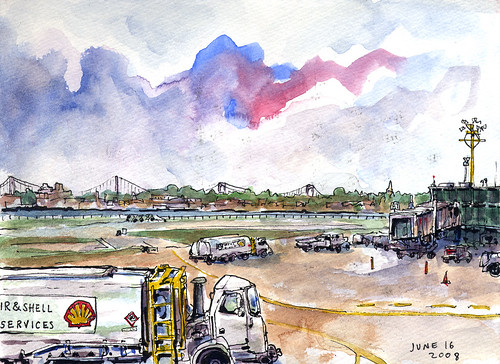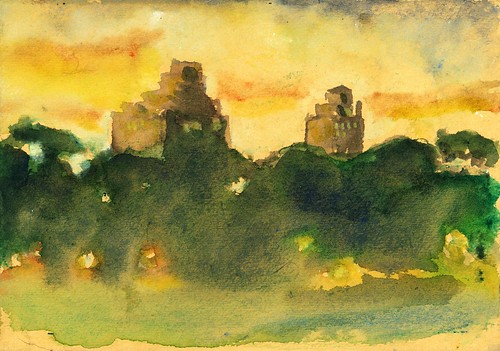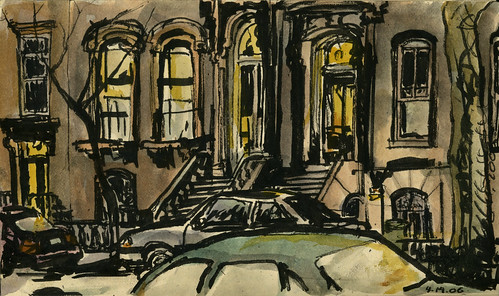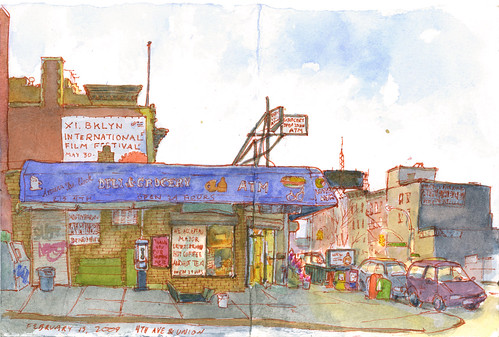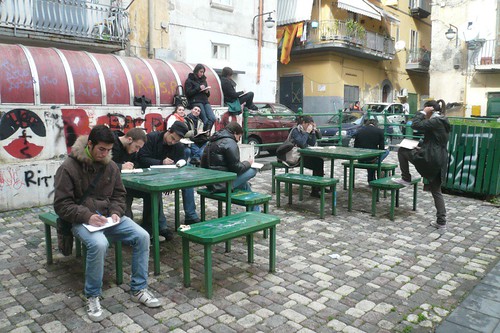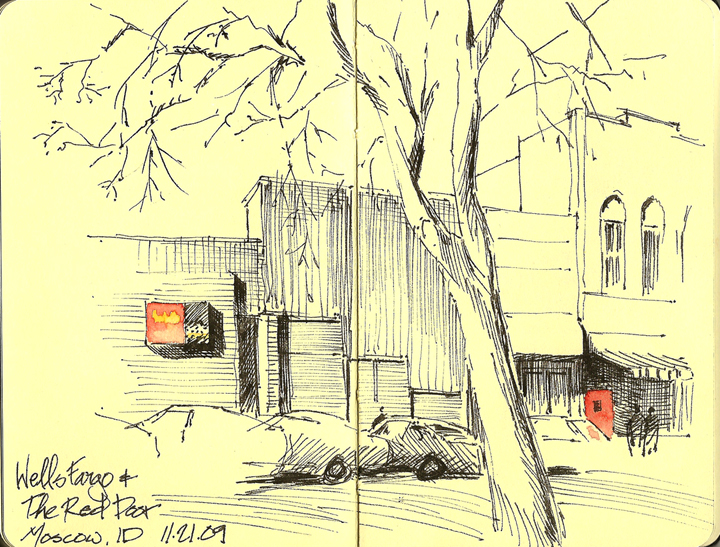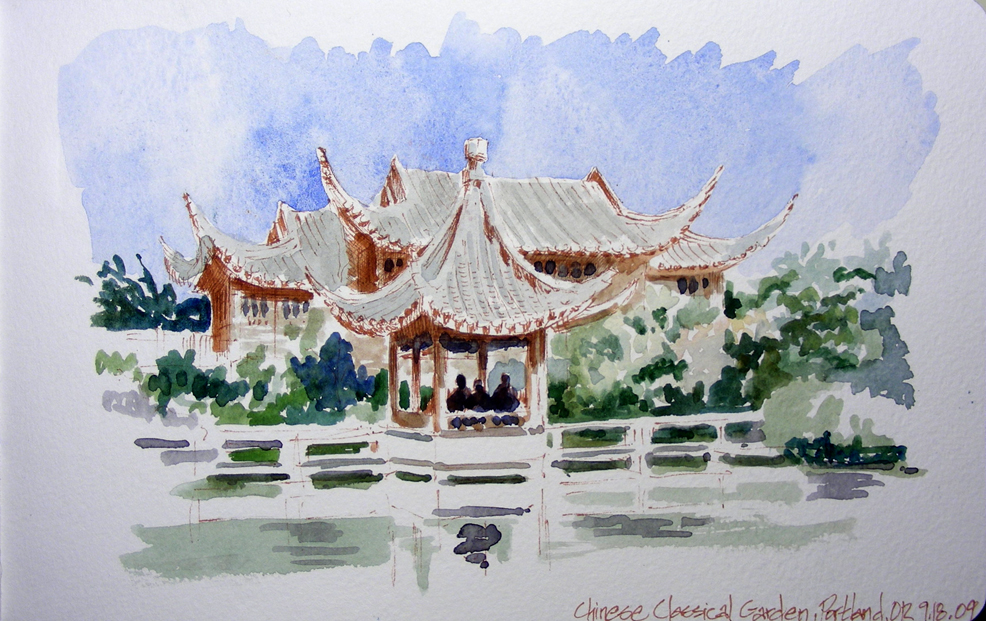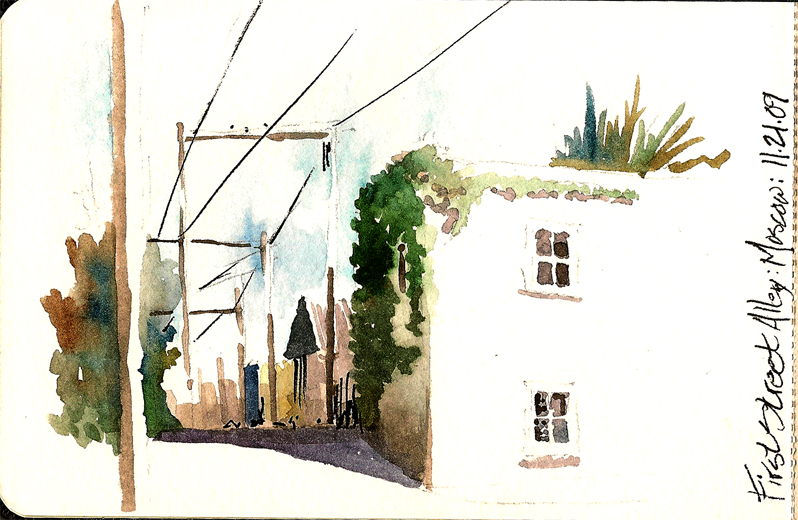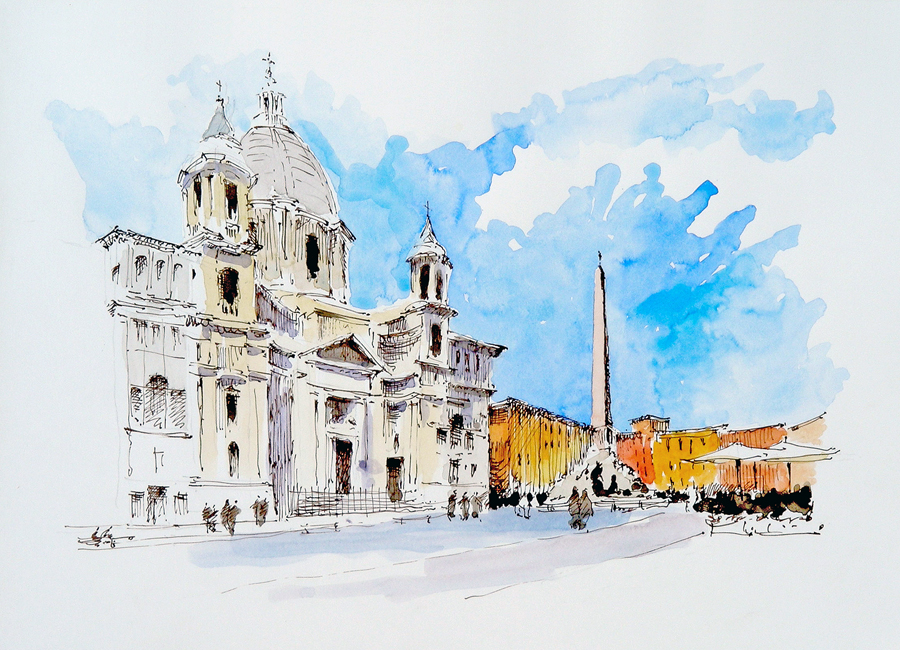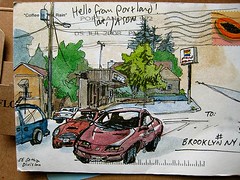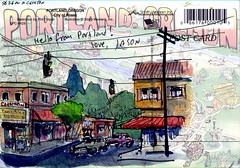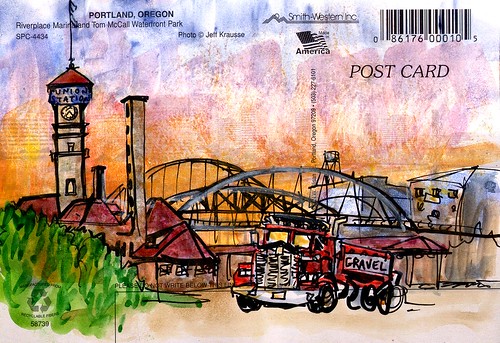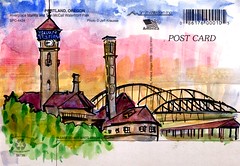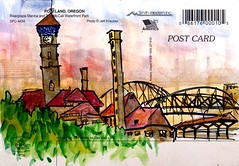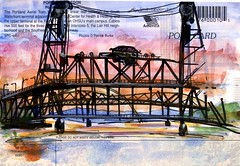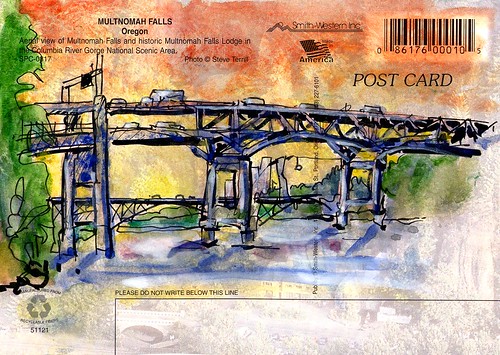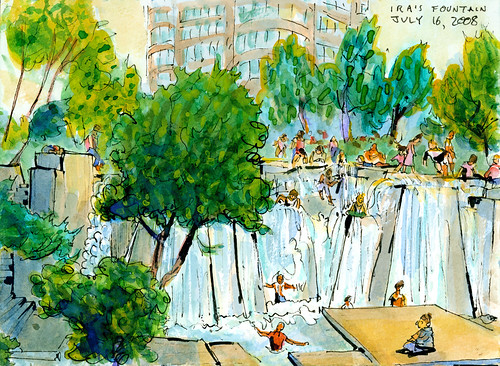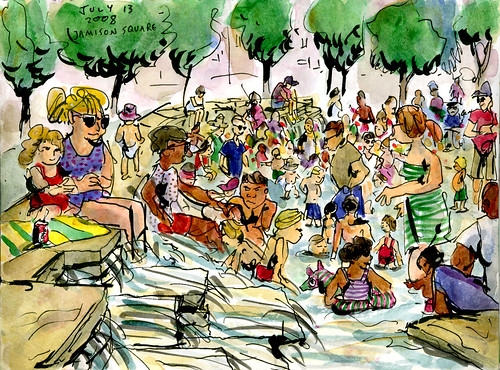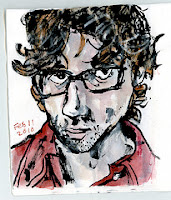 Atmospheric skies, delicate line work and bold black strokes, that's what first drew my attention to Jason Das' work.
Atmospheric skies, delicate line work and bold black strokes, that's what first drew my attention to Jason Das' work.As we visit his website, we discover all his different activities, as he puts it himself: blogs at Gas Water Nothing, contributes sketches to and serves on Urban Sketchers, shapes sounds in The Glass Bees, and saves the world with SuperVegan.
Jason works as an illustrator and also designs, builds and renovates websites. It was in 1995 that he created his first kind of website and he started sketch-blogging in 2005. For someone like me, who has just been discovering the net in the last couple of years, Jason is an artist I'm looking forward to meeting and learning from at the Symposium.
La Guardia Tarmac
Prospect Park sunset
view from Smooch
4th Avenue & Union
Multidisciplinary artist, illustrator and web developer. The web is the place you use to communicate not only about your work but also about things you care. You're interested in online communities and productive social networking. How do all those activities feed each other?
I worry they mostly undercut each other by using up my time and energy! Ideally, I'd like to find sucessful ways to synthesize and reach across any barriers between these different activities.
It can be tough balancing the people I cross paths with and work with. Animal rights activists or illustrators may not have an easy time understanding conceptual art. Postmodern fine arts people are often dismissive of illustrative art, and extremely insensitive to animal and environmental issues. Illustrators often forget to exert a point of view or sense of morality via their work.
There are great traditions of political art and illustrated storytelling, but I haven't (yet) found away to do that sort of work on a level that's satisfactory to me. Part of my problem is I'm not big on polemics and sloganeering--I'm the last guy you'll see wearing a "Go Vegan" T-shirt.
I do think that Urban Sketching can be a political, activist activity. There's great value in sharing honest reckonings of our everyday world. But obviously this is more true if you're documenting an immigration protest than some old interesting building mouldings.
The art and performance I do with the Glass Bees is containing more of my location-sketches, and our projects are increasingly dealing with sense of place and environmental issues, such as last year's "Venice Brooklyn" and our upcoming "Reading Governors Island" which will be part of the Figment Festival.
Meanwhile, as you well know, as great as it is to be involved in worldwide causes (like Urban Sketchers), we can't let that replace being active members of our local communities!
You choose to publish sketches that are quite different in style, technique and approach. Do you kind of plan it or it all depends of the time and tools you're carrying?
I very rarely plan it. I try to have a diverse set of materials with me, but even then I may misplace something, a favorite pen will run dry, or pan of color will run out and I won't get around to refilling it. The sketchbook I use most often these days has different textures and colors of paper in it, so that makes for some surprises, too.
I used to worry about not being a proper artist because I didn't have a "style." At the same time, I find far too many artists (and not just visual artists!) are trapped by their style. Of course, the more work I do, however varied it may be, some elements of style do become recognizable. I won't be surprised if my artwork is a lot more consistent a few decades from now.
In some of your sketches you will use big black strokes made by a brush pen or by a marker. As a sketcher I find it really difficult to make such strong lines work and I admire how you're able to use them so well. How did they come up in your work?
I can be pretty impatient. The more ink I can put down at once, the faster the sketch is finished. Also, if I'm sketching an unposed animate subject (passengers on the subway, kids in the park, animals), working fast is a must!
Another good use of big black strokes is this: I'll use a brown or sanguine line for finer linework and a black brushpen for shadows or other dark areas. This way I'm not stuck with the countours being the boldest element.
The lecture you will be giving at PNCA is titled 'From sketchbook to screen'. Tell us about your vision of the net and how it can help sketchers and artists.
As time consuming as it is, it's a lot easier than it would have been before we had the Web. I suppose we'd be organizing touring shows of our sketches, and mailing them around the world, or publishing paper magazines. A relatively tiny amount of work would be seen by a relatively tiny amount of people, and it would all be frightfully expensive.
If you are only sketching for your inner self, there's no need to share. But as soon as you want more people to see your work, the internet is the way to go. I love the feedback I get from fans and fellow sketchers all over the world, and I love discovering other people's work.
The Internet has made sharing information possible in a way that is unprecedented in human history. I find this tremendously exciting. The barriers to entry, at least for most people in the First World, are extraordinarily low. Anyone can publish their own content, and see everyone else's. Coping with all this content is a challenge of course, but what a great problem to have! As I'm more experienced with computers and the Internet than many of my fellow sketchers, I'm eager to help them make the most of the tools available, and understand fundamental concepts so they don't get left behind by rapidly evolving technology.
• Jason's weblog.
• Jason's work in flickr.
• Jason's weblog.
• Jason's work in flickr.

